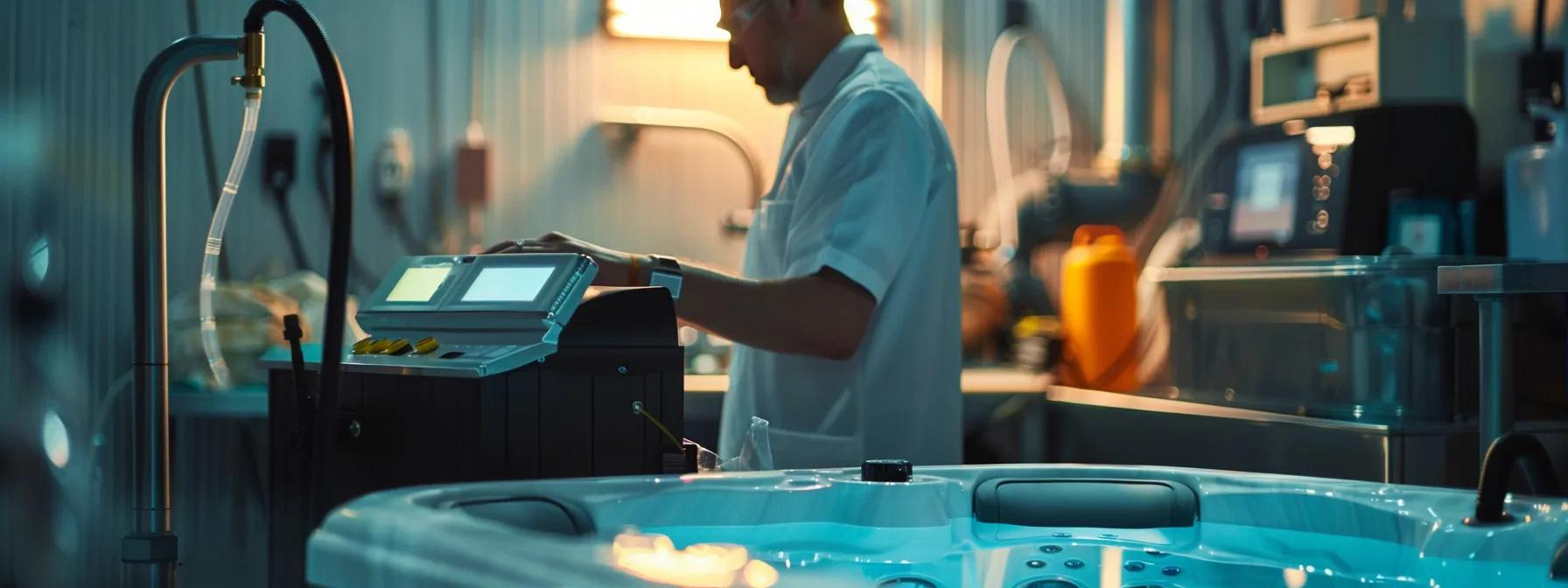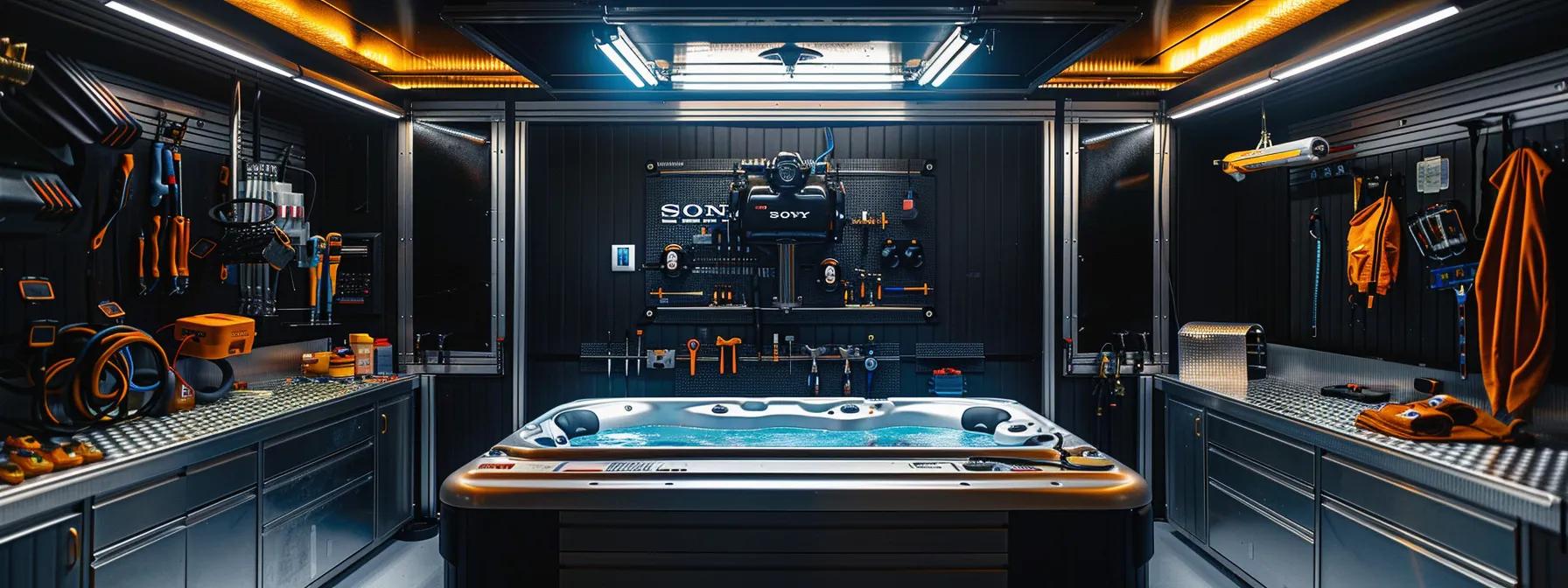Table of Contents
- Identifying Common Causes for a Hot Tub Pump Turning on and Off
- Step-by-Step Hot Tub Pump Troubleshooting for Intermittent Cycling
- Addressing a Hot Tub Pump Not Working Due to Overheating
- Resolving Electrical Faults in Your Hot Tub Pump Troubleshooting
- Fixing Issues When Your Hot Tub Pump Keeps Turning on and Off Due to Sensor Problems
- Advanced Hot Tub Pump Troubleshooting When Basic Fixes Fail
- Frequently Asked Questions
- Final Thoughts
This blog post may contain affiliate links. As an Amazon Associate I earn from qualifying purchases.
Hot TubPumpTroubleshooting: Keeps Turning On and Off
In my years of enjoying and maintaining a hot tub, I’ve learned that a pump that keeps turning on and off can disrupt water circulation, filtration, and your overall spa experience. This guide walks you through common causes of intermittent pump cycling and provides step-by-step instructions to diagnose and fix the issue. Whether you notice unusual noise, reduced water pressure, or unexpected shutdowns, understanding causes such as insufficient water flow, overheating, electrical faults, sensor malfunctions, or air locks can help restore proper performance. With practical troubleshooting tips—like cleaning filters, adjusting water levels, and checking electrical wiring—you can often solve minor issues before needing professional help. Let’s dive in.
Identifying Common Causes for a Hot TubPump Turning on and Off
When your hot tubpump cycles on and off, several factors could be behind it. It is important to inspect each component of the pump system to pinpoint the issue.
Checking for Insufficient Water Flow Affecting Pump Operation
Poor water circulation is often caused by clogged filters, low water levels, or blockages in the plumbing. Debris buildup or sediment in hoses can reduce flow by up to 40%, triggering the pump’s safety mechanisms and causing it to cycle off. Ensuring unobstructed water flow improves filtration and prevents overheating due to an overworked pump.
Diagnosing an Overheating Hot TubPump Motor
Overheating may lead to rapid pump cycling. When the motor gets too hot—sometimes even slightly above the recommended 145°F—safety features may shut it down. Prolonged high settings or poor ventilation around the pump can contribute to overheating. Use an infrared thermometer to monitor the temperature and spot this issue quickly.
Investigating Electrical Issues Causing Intermittent Pump Function
Electrical problems, such as faulty connections, voltage fluctuations, or a tripped circuit breaker, can make the pump start and stop unexpectedly. If the pump receives less than the required 220 volts, it may reset frequently. Testing the voltage at the pump terminals with a multimeter can help identify electrical inconsistencies. Often, a wiring repair or a simple circuit breakerreset can resolve the issue.
Examining Malfunctioning Sensors or Switches
Modern hot tubs use sensors to control water temperature, pressure, and flow. A malfunctioning sensor or switch may send incorrect signals to the control system, causing erratic pump behavior. For example, a faulty temperature sensor can repeatedly signal that the water is too hot, shutting off the pump. Check sensor calibration and replace any sensor or switch that shows erratic readings.
Identifying Air Locks in Your Hot TubPump System
Air locks occur when trapped air prevents proper water movement. These air pockets can block water from reaching the impeller, reducing efficiency. They might be caused by leaks in the suction line or improper reassembly after maintenance. Listen for gurgling or sputtering sounds to detect an air lock, then manually bleed the system to restore steady water flow.
Step-by-Step Hot TubPumpTroubleshooting for Intermittent Cycling

A systematic approach saves time and money. Begin with the simplest fixes and work toward more complex diagnostics.
Inspecting and Cleaning Your Hot Tub Filters
Clogged filters are often the first culprit. Remove the filters, rinse them with clean water, or use a specialized filter cleaner. In some cases, replacing old filters might be necessary. Clean filters ensure that water flows correctly and that the pump receives the necessary water pressure.
Verifying and Adjusting Hot Tub Water Levels
Low water levels can cause the pump to draw in air instead of water, leading to erratic cycling. Check that your water level is around the midpoint of the gasket or skimmer level, as indicated in the manufacturer’s guidelines. Adding water to the proper level can immediately address issues related to air locks and poor water flow.
Bleeding Air From the Hot TubPump and Lines
If you suspect an air lock, bleeding the pump is critical. Loosen the bleed valve or gently tap the pump lines to release trapped air. Running the pump on a low setting while performing this can dislodge stubborn air pockets, leading to smoother operation.
Testing the Hot TubPump‘s Thermal Overload Protector
The thermal overload protector is designed to shut off the pump before overheating causes damage. Test it by running the pump until it feels warm (but not excessively hot) and observe if it shuts off prematurely. Frequent triggering may indicate miscalibration or issues such as blocked vents that restrict airflow.
Checking for Secure Electrical Connections to the Pump
Ensure that all electrical connections are secure and free from corrosion. Inspect the wiring in the pump compartment for loose or damaged wires. Tighten any loose connections and clean corroded terminals with contact cleaner. Secure wiring reduces intermittent voltage drops that might cause the pump to turn off unexpectedly.
Addressing a Hot TubPump Not Working Due to Overheating
Overheating damages your pump and shortens its lifespan. Address the issue promptly to maintain performance.
Ensuring Proper Pump Motor Ventilation
Adequate ventilation is essential for dissipating heat effectively. Check that the pump area is free of obstructions and that air vents are clean and unobstructed. Reposition any nearby objects or, if possible, install an auxiliary fan to boost airflow. These steps help lower operating temperatures and reduce overheating cycles.
Feeling the Pump Motor for Excessive Temperatures
Perform a tactile check by feeling the pump housing during operation. If it feels overly hot (over 140°F), the motor may be under stress. Use a non-contact thermometer for safety and accuracy. Regular temperature monitoring helps ensure the motor works within safe limits.
Allowing the Pump to Cool Down and Observing Restart Behavior
When the pump overheats, it shuts off to cool. Allow it to rest for 15–20 minutes before restarting. Monitor its behavior upon restart. If the pump continues to cycle erratically, it may indicate persistent underlying issues such as a worn bearing or internal damage.
Investigating a Worn or Failing Pump Motor
If overheating persists despite proper ventilation and cooling, the pump motor might be worn or nearing failure. Unusual sounds—like grinding or humming—can signal motor wear, along with decreased efficiency or increased cycling frequency. In these scenarios, consulting a professional technician is recommended to diagnose or replace the motor before further damage occurs.
Resolving Electrical Faults in Your Hot TubPumpTroubleshooting

Electrical faults silently disrupt pump performance. A systematic approach can help maintain constant power delivery.
Resetting the GFCI Breaker and Monitoring Pump Activity
The GFCI breaker cuts power during electrical anomalies. Reset the breaker by pressing the resetbutton on the designated outlet, then observe the pump. If it stabilizes, the issue may have been temporary; recurring trips, however, indicate a deeper electrical problem that requires further investigation.
Inspecting Wiring for Damage or Loose Connections
Carefully inspect the wiring harness for any signs of damage such as frayed insulation, corrosion, or loose terminal connections. Faulty wiring can lead to voltage drops or complete shorts, causing the pump to cycle. Use a multimeter to test continuity and identify sections that need repair.
Testing Voltage at the Hot TubPump Terminals
Ensure the pump receives the correct voltage by checking with a multimeter during operation. Significant deviations from the typical 220 volts indicate an electrical fault. Inconsistent voltage can trigger the pump’s protectors, and resolving these issues might involve professional repair or component replacement.
Checking the Pump‘s Capacitor for Faults
A weakening or damaged capacitor affects the pump’s startup and overall stability. If you observe sluggish pump engagement or rapid cycling, test the capacitor’s capacitance with a multimeter. Replacing a faulty capacitor is generally inexpensive and can restore normal pump operation.
Fixing Issues When Your Hot TubPump Keeps Turning on and Off Due to Sensor Problems
Sensor malfunctions are less visible yet common problems affecting pump operation. Accurate sensor feedback is essential for efficient control.
Testing the Hot Tub Temperature Sensor Accuracy
Inaccurate temperature readings can confuse the control system. Use a calibrated thermometer to verify sensor accuracy and recalibrate or replace the sensor if the readings differ from actual water temperature.
Examining the Flow Switch or PressureSwitch for Correct Operation
Flow and pressure switches ensure the pump only runs when safe water levels and pressures exist. A faulty switch may incorrectly signal low pressure or flow, causing the pump to shut down. Test for proper continuity and correct activation thresholds, and replace the switch if necessary.
Cleaning or Replacing Faulty Sensors
Debris or biofilm buildup on sensors can impair their function. Regular cleaning with diluted vinegar followed by a water rinse may restore performance. Persistent issues, however, might require sensor replacement to ensure consistent operation and accurate readings.
Inspecting Sensor Wiring and Connections
Finally, verify that sensor wiring is intact and well-connected to the control panel. Loose or corroded sensor connections can lead to intermittent failures and erratic pump behavior. A thorough visual inspection and continuity test will help identify any wiring problems that need addressing.
Advanced Hot TubPumpTroubleshooting When Basic Fixes Fail

If basic troubleshooting does not resolve the problem, advanced diagnostics may be necessary.
Recognizing Signs of a Failing PumpImpeller or Wet End
A failing impeller can create unusual noises, reduce water flow, or cause wobbling. The wet end, housing the impeller and seals, may also accumulate debris or show signs of wear. If cleaning does not improve performance, the impeller or associated components might need replacement.
Evaluating the Spa Control System for Errors
Sometimes, errors stem from the spa’s control system rather than the pump itself. Digital error codes or inconsistent control panel behavior may hint at software glitches or hardware malfunctions. Check the manual for error codes, perform a system reset if advised, and seek professional assistance if the control system appears outdated or faulty.
Considering Issues With the Topside Control Panel
A malfunctioning topside control panel can send incorrect signals to the pump. Unresponsive buttons, display errors, or frequent setting resets are common indicators of panel issues. In these cases, consulting a spa electronics technician can help determine whether the panel needs repair or replacement.
Determining When to Call a Professional for Hot TubPump Repair
If you have addressed water flow, electrical connections, sensor accuracy, and ventilation without success, it may be time to call in a professional. Persistent problems like repeated overheating, complex electrical faults, or physical pump damage require expert diagnostics to prevent long-term issues and costly repairs.
Frequently Asked Questions
Q: Why does my hot tub pump keep turning on and off intermittently? A: It may be due to insufficient water flow, overheating, faulty electrical connections, sensor errors, or air locks. These factors can activate safety features that cause the pump to shut down and restart.
Q: How can I determine if my pump is overheating? A: Check the pump housing (using a non-contact thermometer is safest) to see if temperatures exceed 140°F. Overheating is often accompanied by unusual noises or shutdown cycles.
Q: What can cause a malfunction in the temperature sensor? A: Debris buildup, inaccurate calibration, or damaged wiring can lead to incorrect temperature readings that trigger premature pump shutdowns.
Q: How do I bleed air from my hot tub pump system? A: Loosen the bleed valve or gently tap the pump lines to dislodge trapped air. Maintain proper water levels to help remove air locks and restore continuous operation.
Q: When should I call a professional for my hot tub pump issues? A: If basic troubleshooting like cleaning filters, adjusting water levels, checking electrical connections, and resetting sensors does not fix the problem, consult a professional technician. Persistent overheating or electrical faults should be professionally diagnosed for long-term performance.
Final Thoughts
Understanding the causes behind a hot tubpump that cycles on and off is key to maintaining a trouble-free spa experience. Simple actions—such as cleaning filters, ensuring proper water levels, and verifying sensor function—can resolve many issues. However, if advanced troubleshooting fails, professional help is the safest option. By following these detailed steps, you can extend the life of your pump and consistently enjoy your hot tub without interruptions.
Before tackling any issues, always consult your hot tub’s manual and contact a professional if the diagnosis appears risky. This table serves as a quick reference for key diagnostic methods and recommended actions to support effective troubleshooting.



